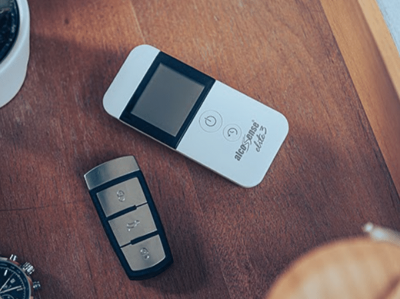What is the drink drive limit in the UK?
Wednesday, January 19, 2022

What is the drink drive limit in the UK?
The safest alcohol limit is zero if you’re planning on driving. Even a small amount of alcohol can slow your reaction time and inhibit judgment – making you more likely to be involved in an accident.
The legal driving limits in the UK are based on the amount of alcohol detected in your blood or breath. In England, Wales and Northern Ireland is as follows:
35 micrograms of alcohol per 100 millilitres of breath (the ‘breath test limit’).
Expressed as 0.35 mg/L
80 milligrammes of alcohol per 100 millilitres of blood (the ‘blood alcohol limit’).
Expressed as 0.80‰BAC
In 1994, the Scottish government reduced the legal alcohol driving limit to bring it into line with many countries in Europe. So the lower drinking limit in Scotland is now:
22 micrograms of alcohol per 100 millilitres of breath (the ‘breath test limit’).
Expressed as 0.22 mg/L
50 milligrammes of alcohol per 100 millilitres of blood (the ‘blood alcohol limit’).
Expressed as 0.50‰BAC
Read more about BAC.
There are strict drink driving penalties if you are found by Police to be over the limit. These could include six months’ imprisonment, an unlimited fine and a driving ban of at least one year. This may be increased to 14 years’ imprisonment if you cause a fatality whilst under the influence.
A conviction for drink driving also means your car insurance costs will increase significantly; your employer will see your conviction if you drive for work; and you may have trouble travelling to certain countries such as America.
How does alcohol affect my ability to drive?
Alcohol affects each person differently, so there’s no way of telling how much you can drink before exceeding the legal alcohol limit. One person may still be legally permitted to drive after a couple of drinks, another may be over the legal drinking limit after just one. As we’ve mentioned, if you’re intending to drive, it’s best to consume no alcohol at all. If you’re planning a night out, choose a designated driver who will stay alcohol-free. Read more about reducing your alcohol level.
The rate at which your body absorbs alcohol depends on a number of factors. These include:
- Your weight
- Your age
- Your gender
- Your metabolism (the rate at which your body uses energy)
- The type as well as amount of alcohol you’re consuming
- What food you have eaten and how recently
- Your stress levels at the time
- How tired you are
- What medication you may be taking
Scientific research shows that you are THIRTEEN times more likely to be involved in a fatal crash if you are at – but not even over - the English legal drink drive limit. Even at 0.10‰BAC (one eighth of the alcohol limit in England and Wales) it is 37% more likely than when completely sober*.
The only way to take the guesswork out of how much alcohol is in your system is to use a personal breathalyzer.
How many units of alcohol can I have before driving?
People often ask, “is 2 units over the limit” - but the legal drink driving limit cannot be converted into a set number of units. A general guide is that two pints of regular-strength lager or two small glasses of wine would be likely to put you over the alcohol reading limit.
Units of alcohol measure the amount of pure alcohol in a drink. One unit is equivalent to 10ml of pure alcohol, which is the amount of alcohol an average adult can process within an hour. You also need to allow time for the alcohol to be absorbed into your blood (around half an hour per unit).
On average it will take two and a half hours for a standard pint of beer (2 units) to leave your system. A large 250ml glass of wine (3 units) would take three and a half hours.
The table below gives a rough guide of how long alcohol can remain in your body and therefore how long you should allow before driving. It is important to state this is only a guide and is subject to all the factors mentioned above, as well as the pattern of drinking. Three pints consumed in an hour have a very different effect to three pints consumed over three hours!

What are the dangers of drinking and driving?
Over 200 people are killed on Britain’s roads each year where the motorist is over the drink drive limit. A total of 6,480 people were injured or killed in drink drive accidents in 2020, according to the latest figures from the Department for Transport. One in 20 of all reported crashes involved a drunk driver.
Nearly four-fifths of drink-drive accidents were caused by a male driver or rider over the legal alcohol limit – just a fifth were women.
A recent report by Public Health England highlighted a 25% increase in alcohol sales in shops and supermarkets between 2020 and 2019, suggesting a steep escalation in home drinking. This highlights the dangers of driving the next day. Almost a fifth (17.8%) of drink drive convictions are ‘morning after’. And a third of all breath tests after an accident are conducted in the morning (between 7am and 1pm).
Remember the slogan:
If you’re drinking, don’t drive.
If you’re driving, don’t drink.
*Source: Drugs and Alcohol: Their Relative Crash Risk, Romano et al. Published January 2014: Journal of Studies on Alcohol Drugs


















